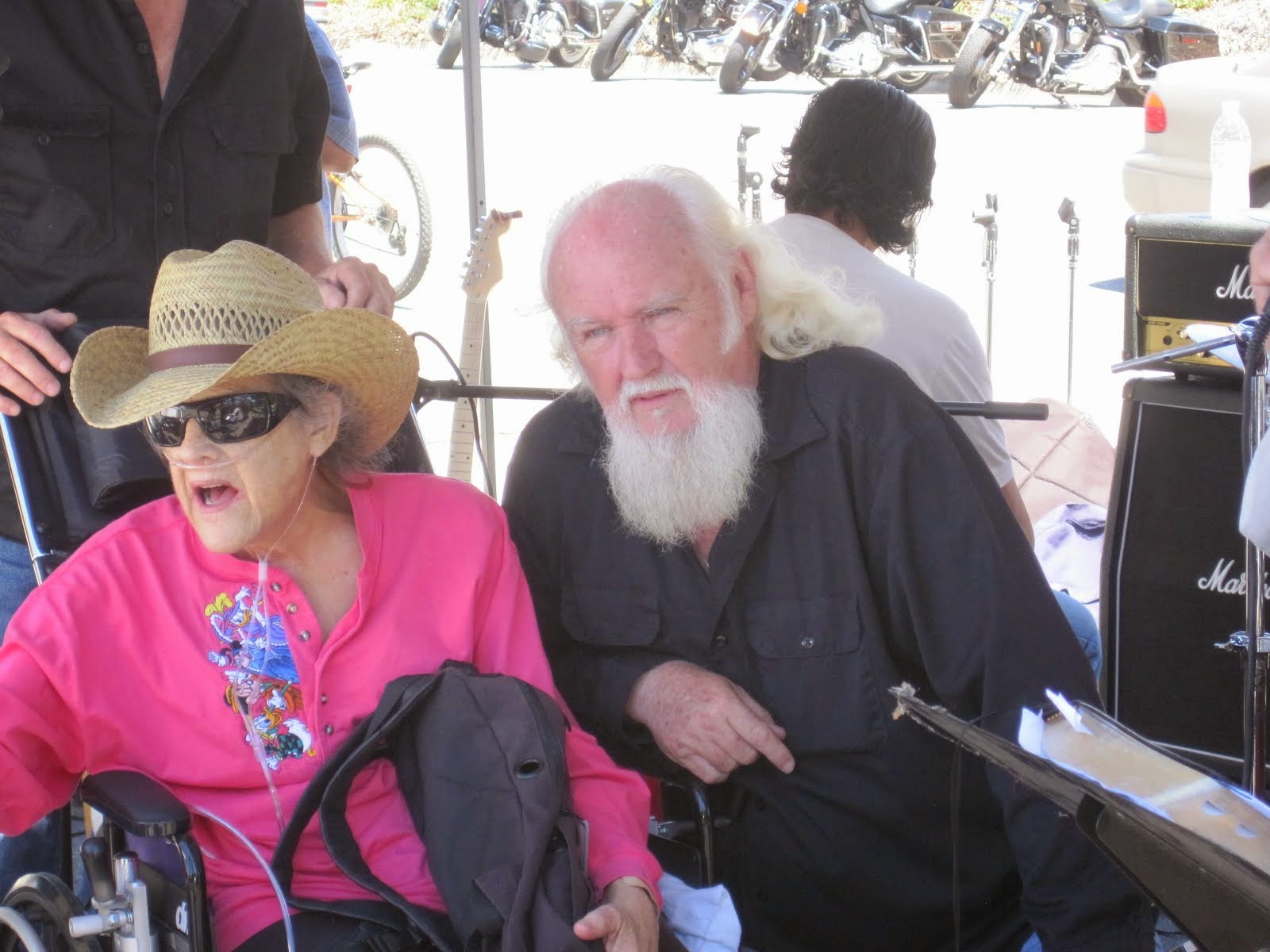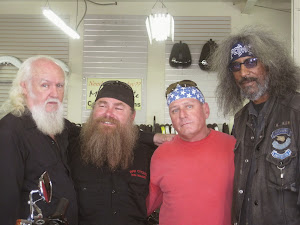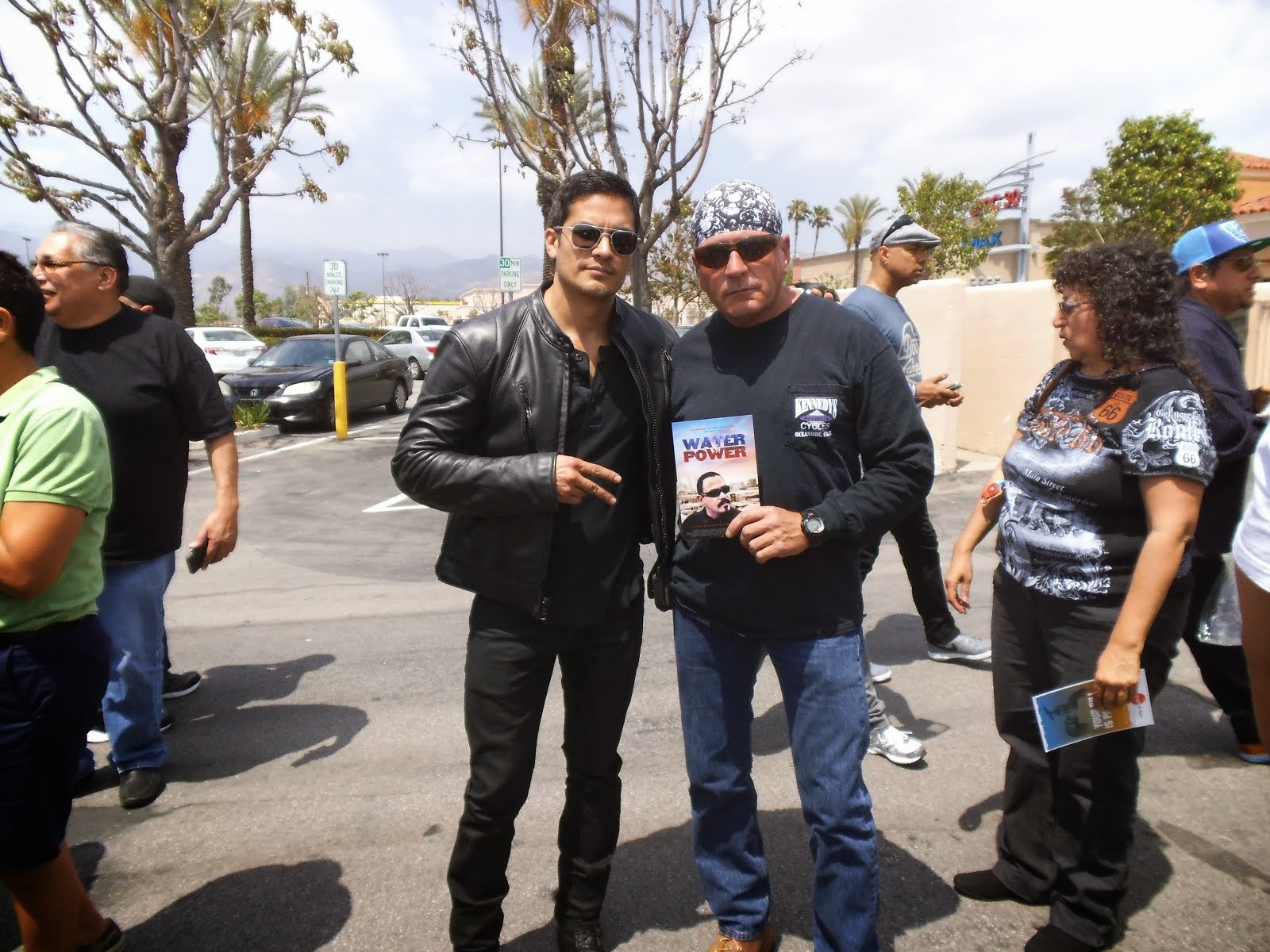OFF THE WIRE
Did you notice that now that there is a financial aspect they said what we have been saying all along.
"Vehicles behind or to one side of a bike can be hard to spot because the helmet restricts visibility and riders must remember to move their head regularly to check."
We can use this in our fight.
Check this out! http://www.bbc.co.uk/news/mobile/technology-12266406?SThisEM
Motorbikes 'to get safe driving aids'
Motorbikes could soon be sporting collision detection and other safety features more usually found on cars.
Research is testing ways to put these systems on motor bikes and how best to alert riders to dangers on the road.
The systems tested include warnings about speed limits, the tightness of road bends and information about other vehicles to aid lane-changing.
The first bike-based safety systems could be appearing on motorbikes within two years, say researchers.
Proof of concept tests on the Saferider systems, as they are known, have been carried out in simulators and on road bikes by Mira (formerly known as the Motor Industry Research Association), which acts as a testing and innovation centre for carmakers.
"Saferider takes the driver safety systems that are becoming standard on cars and tries to adapt them to the unique needs of motorcyclists," said Jonathan Moore, an ITS consultant at Mira, involved in the Saferider project.
Statistics gathered by Mira suggest that about 22% of all road accident fatalities involve bike riders and it is the only mode of transport which is seeing a rise in the number of deaths.
Mr Moore said making safety systems on motorbikes useful was "challenging" because of all the distractions to which riders were subjected.
"One of the most difficult things is getting the rider's attention," he said. "There's a high level of ambient noise and vibration to deal with and we really don't want motorcycle riders looking down at the handlebars any more than they need to."
Bubble wrap
Mira has been investigating how to use haptic, tactile feedback systems to safely get the attention of riders and warn them about other vehicles, prepare them for the road ahead or give help at junctions.
Mira engineers outfitted a Yamaha Tenere and a Triumph Sprint with the safety systems so they could be tried out on a test track.
The systems include laser scanners, haptic handles and gloves, a vibrating seat, lights, smart helmet-cameras and radar as well as a pannier full of the electronics that analyse data gathered by the sensors and pump out warnings.
One system tested works out if riders are travelling too fast to negotiate upcoming bends. Mira has developed software that acts as a "co-pilot" which, with the help of a digital map, knows what speed they should be travelling to make it round a bend.
"One system under test based around radar constantly monitors the blind spots around and behind riders," said Mr Moore. "Vehicles behind or to one side of a bike can be hard to spot because the helmet restricts visibility and riders must remember to move their head regularly to check."
"We put a motor in the cheek pad of the helmet so if you do not notice the object it will vibrate and give you a tactile warning that there's something to the right or left," said Mr Moore.
The system can also help give a rider information about traffic further behind in adjoining lanes to help with overtaking or lane-changing.
Motorbike collision detection systems developed by Mira warn a rider about an imminent impact and let them take action by slowing down sharply or, in the case of a vehicle travelling in the same direction as the bike, following it while slowing.
The safety systems could be a boon to less experienced bike riders.
"They do not give the attention to the road they should or have the experience to deal with problems," said Mr Moore.
The prototypes demonstrated by Mira showed it was feasible to fit such safety systems on motorbikes, said Mr Moore. He speculated that manufacturers would start to put them on bikes within the next 18 months to two years.
Saferider is a collaborative R&D effort that is part of the European Commission's Seventh Framework Programme. Participants include Mira, Yamaha, Porsche Engineering and Fema, among others.
skip to main |
skip to sidebar




Bill & Annie

Art Hall & Rusty


NUFF SAID.......


































































OOHRAH

ONCE A MARINE,ALWAYS A MARINE

GIVING BACK


MOUNT SOLEDAD














BIKINI BIKE WASH AT SWEETWATER










FRIENDS





BILL,WILLIE G, PHILIP










GOOD FRIENDS


hanging out

brothers


GOOD FRIENDS

Good Friends

Hanging Out




Bill & Annie
Art Hall & Rusty
Art Hall & Rusty


NUFF SAID.......



















NUFF SAID......



























Mount Soledad




BALBOA NAVAL HOSPITAL
RUSTY DANNY

ANNIE KO PHILIP

PHILIP & ANNIE

OUT & ABOUT

OOHRAH...

OOHRAH
ONCE A MARINE,ALWAYS A MARINE

ONCE A MARINE,ALWAYS A MARINE
American Soldier Network GIVING BACK

GIVING BACK
CATHY & BILL
PHILIP & DANNY & BILL

MOUNT SOLEDAD
bills today
EMILIO & PHILIP
WATER & POWER
WATER & POWER
bootride2013



BIKINI BIKE WASH AT SWEETWATER







ILLUSION OPEN HOUSE

FRIENDS


GOOD FRIENDS



BILL,WILLIE G, PHILIP









GOOD FRIENDS

GOOD FRIENDS
Friends
- http://www.ehlinelaw.com/losangeles-motorcycleaccidentattorneys/
- Scotty westcoast-tbars.com
- Ashby C. Sorensen
- americansoldiernetwork.org
- blogtalkradio.com/hermis-live
- davidlabrava.com
- emiliorivera.com/
- http://kandymankustompaint.com
- http://pipelinept.com/
- http://womenmotorcyclist.com
- http://www.ehlinelaw.com
- https://ammo.com/
- SAN DIEGO CUSTOMS
- www.biggshd.com
- www.bighousecrew.net
- www.bikersinformationguide.com
- www.boltofca.org
- www.boltusa.org
- www.espinozasleather.com
- www.illusionmotorcycles.com
- www.kennedyscollateral.com
- www.kennedyscustomcycles.com
- www.listerinsurance.com
- www.sweetwaterharley.com

Hanging out

hanging out
Good Friends

brothers
GOOD FRIENDS

EMILIO & SCREWDRIVER

GOOD FRIENDS
Danny Trejo & Screwdriver

Good Friends
Navigation
Welcome to Bikers of America, Know Your Rights!
“THE BIKERS OF AMERICA, THE PHIL and BILL SHOW”,
A HARDCORE BIKER RIGHTS SHOW THAT HITS LIKE A BORED AND STROKED BIG TWIN!
ON LIVE TUESDAY'S & THURDAY'S AT 6 PM P.S.T.
9 PM E.S.T.
CATCH LIVE AND ARCHIVED SHOWS
FREE OF CHARGE AT...
BlogTalkRadio.com/BikersOfAmerica.
Two ways to listen on Tuesday & Thursday
1. Call in number - (347) 826-7753 ...
Listen live right from your phone!
2. Stream us live on your computer: http://www.blogtalkradio.com/bikersofamerica.
A HARDCORE BIKER RIGHTS SHOW THAT HITS LIKE A BORED AND STROKED BIG TWIN!
ON LIVE TUESDAY'S & THURDAY'S AT 6 PM P.S.T.
9 PM E.S.T.
CATCH LIVE AND ARCHIVED SHOWS
FREE OF CHARGE AT...
BlogTalkRadio.com/BikersOfAmerica.
Two ways to listen on Tuesday & Thursday
1. Call in number - (347) 826-7753 ...
Listen live right from your phone!
2. Stream us live on your computer: http://www.blogtalkradio.com/bikersofamerica.
Good Times
Hanging Out

Key Words
- about (3)
- contact (1)
- TENNESSEE AND THUNDER ON THE MOUNTAIN (1)
- thinking (1)
- upcoming shows (2)
Blog Archive
-
▼
2011
(5448)
-
▼
January
(444)
- Hells Angels 29th Annual Florence Prison Run
- New Zealand - Aussie Gangs And Drugs - Prohibition...
- Highway to Heil - How common is Nazi iconography a...
- Bachmann eyes cuts to veterans health benefits
- OREGON PROPOSES DUI CHECKPOINT LEGISLATION
- New Zealand - The police in Porirua say four motor...
- New Jersey - Police survey reveals motorcycle gang...
- New Zealand - Alcohol suspected in motorcycle crash
- Florida - Trial date set in biker fatalities
- Motorcycle ride to benefit Flight 93 memorial
- Prosecutors: 4 witnesses identify suspect in 1982 ...
- Proof Obama wants to continue overspending...... W...
- Sweden - Hells Angels wrap themselves in the law t...
- UK - Bikers band together to help brave Darcie
- Australia - Suspected Comancheros boss to finally ...
- Atlanta, GA - Chief Turner: 'No Decision To Disban...
- New Zealand - Whanganui debates ban on 'outlaw' g...
- Michigan - Woman in critical condition after shoot...
- U.S. - It’s still January but state governments ar...
- Cavity Search on the side of the Road?
- Ocala, FLORIDA - Motorcyclists share hope with Low...
- Profiling Bills to receive hearings by Washington ...
- Australia - Sydney bikie charged with stealing 12 ...
- Operation Home Base. Never Can Say Goodbye. 2 Proj...
- Westmoreland County, PA - 2 sides of Greensburg Sa...
- New Zealand - Turf wars expected as gang sets up..
- Australia - Bikies stopped by cops in Thomastown
- New Zealand - Kiwi police ready to fight Aussie gangs
- No title
- New Zealand - Rebels not welcome here
- "Secret account" motorcycles being returned to dealer
- Australia - Mercanti's partner breaks down while r...
- Canada - Cops? Keep Em Coming, City’s burgeoning ...
- TRAVELS, PAST, PRESENT, FUTURE...........
- REGION: Annual predawn count tracks homelessness l...
- Germany - Rocker War: large raid at the Hells Ange...
- Marine Corps Bases Japan - Ginowan hosts annual Tr...
- Bond set at $2.5M for Round Lake Beach cold case s...
- Va. Beach delegate fails in bid to ban kids on mot...
- Hells Angels Recruiting Heavily in AZ
- OCEANSIDE: Police chief's wife pleads not guilty
- That Old Time Rock and Roll
- Custom motorcycle to be unveiled in Dallas by Gene...
- Delaware - Legislators honor Patriot Guard Riders
- The future ?
- SOUTH DAKOTA: and Around the U.S.
- Court won't hold 'Don't ask, don't tell' lawsuit
- Motorcyclist found dead on roadway in Escondido
- “YO MOMA OBAMA” SUPPORTS DICTATORS AROUND THE WORL...
- Think you can ride a motorcycle?
- UTAH - FBI mistake: Salt Lake County no longer has...
- SOUTH CAROLINA: South Carolina Motorcycle Accident...
- BIKERS USA Illinois Special
- Nebraska Trying To Rip Off Bikers
- May 7th, Second Annual Biker Benefit for Second Ha...
- More from Nebraska, Trying To Rip Off Bikers..
- MMA 2011-2012 Legislative Agenda Announced
- Australia - Ulysses Bikers pizza parking exemption...
- What is going on in Europe
- Illinois
- Reprimanded or removed Judges
- TEXAS: Domestic use of aerial drones by law enforc...
- Missouri Motorcycle Helmet Law Under Attack
- WASHINGTON DC: H.R.259 -- Michael Jon Newkirk Tran...
- Australia - No apology for bikie ram raid
- Washington DC - Rehberg introduces Kids Just Want ...
- Chesterfield, VA - Chesterfield police take eviden...
- Motorcyclists gather at Capitol to lobby represent...
- Biker gang leader ‘Scarface’ sent to prison for 37...
- Australia - Police discount threat of Blacktown bi...
- Australia - Bikie figures don't lie, says Rann
- Court hears of bikie brawl 'amnesia'
- Motorcycle Safety News
- Fish Aid Music Festival - Press kit
- Canada - OTTAWA - Rallies planned to mark end of A...
- BLADEN COUNTY, NC - Five arrested for running an u...
- Australia SA Labor minister Paul Holloway attacks ...
- They Be Clubbin'
- Sentence is appealed
- LOCAL 6 "E-MAIL BLAST"
- Motorcycle flag placement
- Senate's first budget attempt spreads painful cuts...
- Nebraska Motorcycle Safety fund may get the ax!!
- Texas
- Safety coalition urges Colorado lawmakers to tough...
- "HEADS-UP VA VETS WHO CONCEAL CARRY...SERIOUS!
- Ex-Calif. sheriff surrenders to begin prison term
- Why isn't this illegal?
- U.S.: Gun raids show cartels at work in Arizona
- RISKS ON ROADS, Study: Roads are safer in urban a...
- Feds Drop Plan to Change Workplace Noise Standards
- Australia -Hells Angel faces possible jail term
- Australia - Bikie comments haunt SA police chief
- Virginia County Settles with Victim's Family for $2M
- NEW YORK LEGISLATION UPDATES: motorcycles
- facebook page "Ca businessed that discriminate aga...
- Question is.... what represents "Probable Cause"
- Motorcyclists Ask Missouri Senators to Scrap Helme...
- Australia - Bikies aren't so bad, says Commissione...
- Seattle, WA - Detective from 2008 shooting incide...
-
▼
January
(444)
Bikers of America, Know Your Rights!... Brought to you by Phil and Bill
Philip, a.k.a Screwdriver, is a proud member of Bikers of Lesser Tolerance, and the Left Coast Rep
of B.A.D (Bikers Against Discrimination) along with Bill is a biker rights activist and also a B.A.D Rep, as well, owner of Kennedy's Custom Cycles
